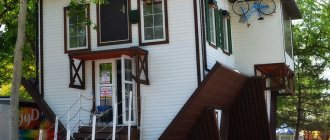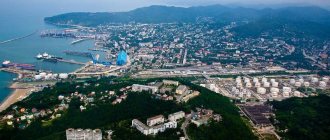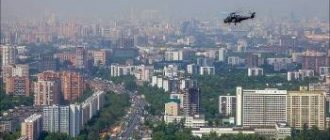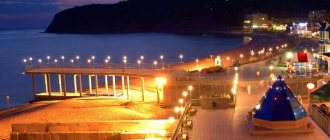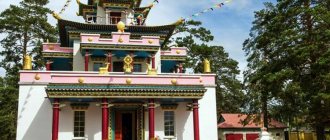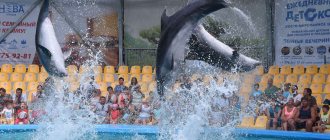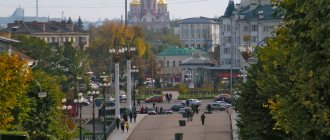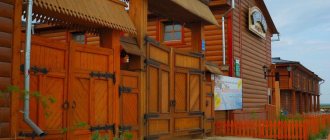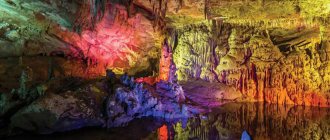If you are a fan of ancient architecture and outdoor recreation, then a tourist trip to the city of Borovichi (you will find photos and descriptions of attractions below), located in the Novgorod region, will be the best solution. This place was first mentioned in Old Russian chronicles back in the 15th century. The small village was a haven for traders and artisans. In the 19th century, lime, brown coal, pyrites and refractory clay began to be mined in Borovichi, which led to the rapid development of the city. Let's take a closer look at the city of Borovichi, its attractions and what to see in it.
Bridge over the Msta River
The arch bridge, built more than a hundred years ago, is rightfully considered the hallmark of the city. The creation of the engineer Belelyubsky has the shape of a stretched bow and majestically rises above the Msta River. The openwork design gives this powerful and heavy structure visual weightlessness and airiness. In the 90s, by order of the president, this object began to be considered a historical and cultural heritage of a federal scale.
At the end of the 19th century, the Borovichi City Duma decided to build this bridge. A lot of money was required, and the city budget was unable to cover all costs. For this reason, the authorities began to collect the necessary amount through voluntary donations. After the money was collected, representatives of the Duma turned to the designer Belelyubsky, who created three designs for a bridge across the river. The choice fell on an arched structure. Construction of the bridge began in 1902, and within three years the work was completed.
Museum of Local Lore
In this museum, thanks to exhibitions and slide shows, tourists can get acquainted with the history of the city of Borovichi, the sights of which attract many tourists. After getting acquainted with the life of merchants and artisans, everyone can take part in a traditional tea party, where they can try local baked goods and a variety of confectionery products made in the city factory.
The museum was opened at the beginning of the 20th century, and at first the exhibits included antique furniture, books, paintings, as well as wooden, leather and ceramic products - the main items of noble life. Today, in the collection of the local history museum, in addition to local industrial products, you can find exhibitions from the times of the Great Patriotic War.
Entertainment and attractions of Borovichi
If we talk about the sights of architectural and historical heritage, which, without a doubt, can be found in any settlement on the globe, then in this regard the Borovichs also have something to boast about.
First of all, the Borovichi’s “calling card” is Russia’s first arched bridge across the Msta, which celebrated its centenary in 2005. Now the bridge is pedestrian.
Details of the history of the city, from its origins up to the revolutions of 1917, can be seen by visiting the exhibitions of the Borovichi Museum of Local Lore. Visitors have the opportunity to watch a slide show with fragments of the life of the county town and merchants, and at the end of the tour, have tea in accordance with local traditions with sweets from a local confectionery factory.
Beautiful architectural monuments in Borovichi include the wooden railway station building, built in 1876 and still in successful use to this day; The Holy Spirit Jacob Borovichi Monastery is one of the most ancient Russian monasteries, founded in the 14th century (the stone Cathedral Church of the Descent of the Holy Spirit and an active holy spring have survived to this day in its original form), and the Trinity Cathedral of the mid-19th century. Currently, the local House of Culture is located in the temple building.
Borovichi
Borovichi Churches
Of the churches built more than a decade ago, in Borovichi and its environs you can visit the Assumption Cathedral (built in 1800), which represents an architectural mix of different styles, the Church of the Holy Great Martyr Paraskeva (its history dates back to 1796) with a holy spring near the walls of the temple, the church in honor of the icon of the Mother of God “Tenderness” (functioning since 1871) with the miraculous spring of Yakov Borovitsky, the Church of the Assumption of the Mother of God in the village of Opechensky Posad, consecrated in 1764.
Architecture of Borovichi
Fans of archaeological excavations will be interested in visiting the remains of ancient settlements and burial mounds found on the outskirts of the city.
Among the creations of modern architects, a giant wooden chair, installed as a symbol of furniture production near the territory of a local furniture factory, attracts attention.
In addition to the latter, in Borovichi there is a building materials plant that celebrated its centenary in 2010, as well as companies producing industrial equipment for various fields of production, metal doors and locks. The food industry is represented by a dairy and meat plant, a bakery and confectionery plant.
Water park in Borovichi
And if tourists choose the summer season to travel to Borovichi, they simply cannot do without visiting the city water park. For those who like to “float around”, all the conditions have been created here: a swimming pool with paths, a swimming pool with fountains that have a massage effect, slides (straight and winding), a children’s pool, a swimming pool with a jacuzzi, and finally, a sauna - in a word, every vacationer will find something to suit their taste in the water park. taste.
Old station
Arriving in the city, the first thing tourists encounter is the station building, which in itself is a landmark of Borovichi. The facility was built at the end of the 19th century.
The single architectural ensemble includes four buildings located parallel to the railway line:
- station building;
- warehouse space;
- luggage compartment;
- water tower.
A special feature of the station is that every object is made of wood. The main room is equipped with a beautiful openwork cornice.
Refractory bricks were produced in Borovichi, and to export them, Borovichi industrialists built a railway with their own money. The line, more than 30 kilometers long, was launched in 1878.
The landmark of the city of Borovichi became the location for the filming of the film “State Councilor”.
Despite its antiquity, the facility is still in operation and welcomes guests from all over the world.
Suvorov Estate
35 kilometers from the city you can find an estate named after Suvorov, the famous commander. It is located in the village of Konchanskoye-Suvorovskoye - the family estate of the Suvorov family (at one time his father bought this land).
In the 40s of the last century, in a settlement that was previously called simply “the village of Konchanskoye,” a monument to this historical figure was erected, and the village was renamed, adding the word “Suvorovskoye” to the name.
The museum building was opened two years after the installation of the monument. The exhibition was dedicated to peasant farming and life during the times of the landowner Suvorov.
Today, on the territory of the museum, tourists can see the commander’s winter house, an ancient well, a park area with a pond, a gazebo and centuries-old oak trees.
Some objects were reconstructed at one time because the buildings were wooden and could not be preserved in their original form. Items inside the estate also, unfortunately, have not been preserved. However, some things that belonged to Suvorov were still preserved and can be seen in the museum. Among the exhibits there are rare and interesting paintings.
What to see in the Novgorod region - 1
Achieved the following:
- take a walk through the 10th century Slavic village,
- visit the holy spring,
- walk around the pitiful remains of Suvorov’s estate “Alexandria”,
- take a walk around Borovichi and the “suburbs”.
We didn’t have time to stop by Suvorov’s estate in the village of Konchansko-Suvorovskoye and look into one of the abandoned villages. We definitely decided to come back here in the summer.
UPD: in the summer of 2016, we also looked at Suvorov’s estate and wandered around the abandoned Tidvor. I'm glad that the plans are coming true. Read about this trip here:
Report on a car trip in the Novgorod region - 5 interesting places
And now, in order.
We left St. Petersburg relatively early - at seven in the morning, and at ten we were already at the gates of the Slavyanskaya village in Lyubytino. A most interesting place! Most of the interesting places in the Novgorod region pale in comparison to the village - and in it (in the region) there is enough to see.
Slavic village in Lyubytino
Right at the entrance to the museum, along the way we noticed high hills - man-made burial mounds. And they didn’t take a picture, can you imagine?
The Slavic Village Museum is located on the outskirts of the village of Lyubytino. In the only building there is a small local history exhibition and a film showing the main moments in the life of the ancient Slavs. Tickets for the open-air exhibition - in fact, the Slavic village itself - are also sold here. You can run around it all in ten minutes - there are about a dozen buildings here. Run around and not understand anything... Well, houses, so what?...
The 10th century Slavic village should only be visited with a guided tour. In a fenced area, on the site of an excavated settlement, the life of the Slavs of the 10th century has been recreated.
The buildings are said to stand exactly as they did 11 centuries ago. Although, how can you be sure of this if no pictures and photographs have been preserved?... But it is believed that this is exactly how our ancestors lived. In houses without windows, with roofs covered with turf, with doors that only a two-year-old child could walk through without bending. The four residential houses are different both externally and internally. With or without verandas, awnings. The stoves in all houses are installed differently, depending on the habitat of the Slavs - in the west, north or south of Rus'. For some reason, without the east. Everything else is the same - cramped space, unpretentiousness and an abundance of birch bark products. The tour lasts about an hour, costs a penny and gives a lot of information about the Western, Southern and Northern Slavs. How they lived, how old they lived, what they ate, what they wore, and why, in fact, the stoves were installed differently. The entrance to all the houses is open; the most curious can turn the handle of the millstone, strike a spark from flint and try themselves as a weaver.
At the end of the excursion, almost by force, the guide helps you put on Slavic clothes - men put on chain mail, women - some kind of ponchos. And then the men are not released until they hit the target with a spear.
A worthwhile place, we highly recommend it to everyone! A must-see regarding what to see in the Novgorod region. Of course, it’s better to come here in the summer (it’s warmer), but we weren’t offended in the chilly November. And Msta is magnificent here.
Having frozen to the very hair follicles during the excursion, we watched the exhibition in the administrative building of the museum and a film about the Slavs. At the same time we warmed up. In the room for showing the film there are models of the same buildings that exist on the territory of the village - Tanya fell into puppy delight, finding small houses and telling what is in the same ones, only bigger and real.
Of the minuses, only one was noted in the Slavic Village - the toilet. This is a village toilet, very noble in appearance, but with an ordinary cesspool inside. And you won’t find it right away - you need to ask leading questions to the staff.
- Ticket price to the Slavic Village: 70 rubles + 30 rubles for photography.
- Opening hours are from 10:00 to 17:00 from October to March and from 9:00 to 18:00 from April to September.
- Closed: Monday, last Friday of the month and Sunday from October to May.
Animals are not allowed into the museum territory!
I recommend reading: What to see in Veliky Novgorod in one day with a child
After a visit to the 10th century Slavic village, we went to Lyubytino for lunch. We went not far - 380 meters from the Veche cafe (Sovetov St., 10). From the outside it looks like a provincial basement cafe, but in fact it’s a canteen. With quite decent food and reasonable prices - soups from 50 rubles, main courses from 100. For three soups, two main courses and two coffees, they left 500 rubles. We recommend the cafe. As it turns out tomorrow, it would be necessary to stop by the next day. We didn't stop by and made a mistake. But more on that below, “tomorrow.”
We took a photo next to the cafe of the House of Culture, located right in the building of the Church of the Nativity of the Blessed Virgin Mary from the late 19th century. A church without crosses is a more than pitiful sight... Nowadays it is rare to see recreation centers and other technical schools within church walls.
Lyubytino made a good impression. There were villages and towns along our travel route that were more interesting, and others that were more boring and sad. Lyubytino is quite clean, without the local Uncle Vasyas with the characteristic beetroot tint of their faces and desperately barking Bobiks. There are many shops, many cafes, and baked goods stalls right on the streets. Not boring, in short. Not boring at all. There is even an abandoned railway station:
Suvorov's estate "Alexandria" and waterfalls
We went to Suvorov’s estate “Alexandria” in the village of Kamenka . They say that it was in Kamenka that Suvorov’s mother had a vision of Saint Nikander, who predicted to her the birth of a son who was destined to become a great Russian commander. Many years later, the grandson of Alexander Vasilyevich (also Alexander) converted the estate into a military hospital. And now there is a children's Orthodox camp here. In a sad and crumbling state. In November, of course, everything is closed here. But something tells us that there is not much optimism in Kamenka even in the summer. Both the estate and the church (also without domes) are in very poor condition.
For a change, we visit waterfalls (do you know that in the Novgorod region you can see real waterfalls???)
Taken from the geocaching site:
The Tikhvin ridge is the northern spur of the Valdai Upland. It runs from the Msta River in the south and almost to Svir in the north. The southern part of the ridge is called the Sherekhovsky Heights, it is here that the rivers flowing into Msta cut through the hills, forming small waterfalls. One of the waterfalls already has a cache “Matsesta on Priksha”. This cache is dedicated to something else, on the Belaya River. In general, among the landscape natural objects of the Novgorod region, the Belaya Valley, and the entire landscape of the village of Sherekhovichi, occupies not the last place. The village itself is on hills and surrounded by hills. While I was looking for a tractor driver, I managed to take a good look at everything. A dirt road leads to the waterfall, don’t let the mention of a tractor driver scare you, in the summer the road is passable for any car, but in the spring the clay turns into slime, and the slightest mistake by the driver is enough for you to be “slipped” to the side. Although in spring, of course, the river is fuller and the waterfall is more beautiful. Coordinates of the waterfall itself: N58` 46.766 / E33` 33.761 There is a clearing at the top where you can camp.
Estate of landowner Nekhlyudov
Little is known about this cultural site, but its mysterious appearance attracts many tourists. At the end of the 19th century, the landowner Nekhlyudov built a real castle in the Gothic style near Borovichi. After some time, the owner of the house changed, and the right to property was transferred to a local entrepreneur, Wakhter, who produced clay bricks.
There are legends among the people about a ghost living inside the castle. They say that at night you can hear roaring and tapping.
During Soviet times, a school was located in the estate. Nowadays, the owner of the object lives outside of Russia, and the castle has a neglected, dilapidated appearance. The walls of the estate are covered in cracks, and the windows and doors are boarded up.
If you want to get an unforgettable aesthetic pleasure, then be sure to visit this cultural site in the city of Borovichi. It is located not far from the city itself, near the village of Khvoyny.
What other places can you visit?
There are beautiful places everywhere in Borovichi. For particularly sophisticated tourists, we recommend visiting three attractions:
- Having got out of Borovichi, in Sosnovka you can get to the holy spring of Yakov Borovitsky. There is also a chapel and a local temple. Residents of the city often come to this place for holy water. The source of clean water is located at a depth of thirty meters. In the chapel you can see the icon of the Mother of God. Another icon is made on a linden board.
- Tourists will also be interested in visiting the suspension bridge in Opechensky Posad. It unites two local villages and is over 60 meters long. To create the object, transverse and longitudinal boards laid on steel cables were used. The cables are attached to pylons (pillars) installed at the beginning and end of the suspension bridge.
- In the city you can see an unusual sculpture made of wood - a giant chair. It is located near a local factory that produces furniture. This is a kind of monument to local production. Many people love to take pictures next to this amazing object.
If you love history, then you should go on an archaeological trip outside the city to explore and excavate local mounds and forts.
What to watch and where to go
- The calling card of Borovichi and one of the main attractions is the arched bridge over the Msta River. Its peculiarity is that it was the first of its kind in Russia. It was designed by Belelyubsky at the beginning of the last century and immediately became an example of bridge construction. The three-hinged steel structure of this bridge was later used as a model for the construction of the Sydney Harbor Bridge in Australia. In 1995, the bridge was included in the list of cultural and historical heritage sites of all-Russian significance. In 2005, the structure turned one hundred years old; now it is used as a pedestrian bridge and is a favorite place for tourists - memorable photos are taken here.
- There is also a local history museum in the town. History buffs can book a tour and learn more about the history of Borovichi by viewing exhibitions and slide shows showing the life of merchants and artisans of the county town. At the end of the excursion, everyone is offered tea according to local traditions; tea is served with sweets and pastries made at a local confectionery factory.
- One of the most important and oldest architectural monuments is the wooden station building. It was built back in 1876, and the station is still in successful use today. The building underwent a major reconstruction in 1976, but its appearance remained almost unchanged. This station can be seen in the film “State Councilor”.
- The Holy Spirit Jacob Borovichi Monastery is definitely worth a visit. It was built and consecrated back in the 14th century, and continues to function today. The Cathedral Church, built of stone in the 17th century, has survived to this day; before that, the monastery consisted of three wooden buildings in which 14 monks and an abbot lived. Near the walls of the monastery there is a working spring with healing water.
- Fans of architectural and historical sights will also be interested in the Trinity Cathedral. True, today there are no services held here; the local House of Culture is located in the temple.
- History buffs can go with archaeologists outside the city to excavations and explore the remains of mounds and ancient settlements. In Borovichi there is a very interesting monument - a huge chair made of wood. It was installed in front of a local furniture manufacturing plant as a symbol of production.
- Another attraction that is not exactly in Borovichi, but also very interesting, is the suspension bridge in the village of Gverstyanka. To tickle your nerves and walk across the bridge, you only need to drive a couple of kilometers from the city.
- Just beyond this bridge stands an abandoned, once very beautiful mansion. This is the Nekhlyudov estate. The building's architecture resembles a small castle; there is even a belief that the ghost of the former owner lives in it, wanders at night, moans and rumbles. Obviously, for this reason, none of the locals are buying the building or wanting to put it in order.
- If you travel in the summer and like to splash around in the water, then a visit to the local water park will be just right for you. There are two slides - straight and winding, four swimming pools - with paths, with fountains that create a massage effect, with a jacuzzi and a children's pool, as well as a sauna.
In addition to those listed above, there are also the following temples and churches in the district:
- Assumption Cathedral, built in 1800, this temple is distinguished by very interesting architecture, combining several styles.
- Church of the Holy Great Martyr Paraskeva - near this temple there is also a sacred spring.
- The church dedicated to the icon of the Mother of God “Tenderness”, built in 1871, is famous for its source of Yakov Borovitsky.
- Church of the Dormition of the Mother of God in Opechensky Posad.
You can stay overnight in one of the guest houses. Since Borovichi is a small and provincial town, it is difficult to find any information about local hotels and book a room on the global network. But this is not a problem - there is always a place to stay in the guest house. There are no problems with food either - there are enough small restaurants, cafes and snack bars. Of course, you won’t get any special delights, but you can have a hearty and inexpensive lunch or dinner. And you can get here from Moscow and St. Petersburg either by private car or by direct train. Borovichi in the Novogorod region is a small but cozy town that warmly welcomes its guests. Local residents are proud of their sights and willingly show them off to visitors. You can visit here both in summer and winter; a warm welcome and interesting excursions always await you
Where can you relax with the whole family?
If you are wondering where to go in Borovichi, the answer is simple: for a family holiday, you can visit the arboretum, located 35 km from Borovichi, in Opechensky Posad. The founder of the park is a resident of this village, S. A. Ushanov. Without assistance from the state, he created this unique creation for half a century.
The Opechensky Arboretum will delight the whole family with trees growing on its territory, both ordinary and exotic, such as Japanese spirea, Balkan pine or Korean forsythia. The park arouses interest not only with rare plants, but also with fantastic sculptures located throughout the area. This is a popular attraction in Borovichi. The place will also surprise tourists with a homemade fountain that looks like a captain’s bridge, as well as a three-meter-tall bear speaking in the voice of the park’s founder.
Opechensky Arboretum attracts tourists because of its beautiful pond, the island of newlyweds and the observation deck.
Regarding entertainment in Borovichi, Novgorod region, for a quality summer holiday it is recommended to visit the local water park in the city of Borovichi. Here you will find water slides, several swimming pools (including a children's pool) with all amenities, including a jacuzzi. Vacationers can take a steam bath in the modern sauna inside the complex.
Where can you stay overnight and have something to eat?
The problem with an overnight stay will be solved by a local guest house. Borovichi is a small, provincial town, so it is difficult to find information about city hotels for booking a room on the Internet. But when you contact a guest house, you can always count on a free place to relax.
There are no problems with food in the city: you can always grab a bite to eat in small restaurants, cafes or snack bars. There are no exotic dishes here, but you can have a cheap and satisfying lunch with the whole family.
You can come to Borovichi from Moscow or St. Petersburg by car or by purchasing a train ticket.
Borovichi
And in the evening (more precisely, not so much in the evening as in the “darkness”) we arrive in Borovichi.
We walk along the dark streets. We walk without a camera on purpose - so that we can look around the houses and not be distracted by the endless clicking. And we don’t regret it at all, even though it’s not very right.
At the city supermarket “Ekaterininsky” we buy a box of cakes and with a feeling of fulfilled duty we go to the guest house.
Useful information about Borovichi – what to see, where to stay and have lunch
For some reason, you can’t find hotels in Borovichi on Booking.com. There are plenty in the area, but not here. And you can’t book anything online. We called and booked a Guest House on Dzerzhinsky Street, 8. Close to the center, but the street is quiet.
There are cafes in Borovichi on every corner - both canteens and “European” ones, and “Shaverma with home delivery”. There is no point in giving addresses, because in fact there are a lot of catering establishments.
What to see in Borovichi
The most interesting buildings (really interesting) on the streets:
- Gagarin (until 1970 it had no name),
- Dzerzhinsky (we lived on it),
- Sovetskaya (one of the main streets of the city),
- Podbelsky (modern houses stand interspersed with merchant houses),
- Kommunarnaya (merchants' houses here are mostly made of stone).
Church of the Assumption of the Mother of God on Parkovaya Street (1800):
Arch Bridge, built in 1905:
The Holy Spirit Monastery, the main attraction of Borovichi, seemed more than attractive from a distance, but did not make any impression inside. Some kind of small…..
Our Tanya saw a giant chair from the car window and demanded that we turn around and take pictures. We knew about this attraction in advance, but when we arrived in Borovichi, we completely forgot. And if it weren’t for Tanya, they wouldn’t even notice... Chair address: Sofia Perovskaya St., 22.
Outside Borovichi, in the village of Gverstyanka (a couple of kilometers from Borovichi) there is a suspension bridge, also a local landmark:
And next to it is the Nekhlyudov estate:
It is strange that the building remains unclaimed. This is probably due to the legend - they say that in the estate, which is more reminiscent of a castle, the ghost of the former owner lives. And it rumbles at night.
From the photographs you can see that on Sunday, that is, on the second day of our “weekend” trip, snow fell.
All over Russia, if you believe the news. All hotels in the Novgorod region ->> From what was not captured in our camera, but is worth seeing:
- Museum of Local Lore (Dzerzhinsky St., 7). It is located in the house of the merchant Shulgin, who was once the mayor of the city. This is one of the oldest museums in the Novgorod region, opened in 1918.
- Wooden railway station building built in the 1870s. The station was filmed in the film “State Councilor”.
Do you want to know our opinion about Borovichi? A nice, clean, large, quiet outback of Russia, which is also the second largest city in the Novgorod region. This is such a funny combination. We liked Borovichi. Especially in the dark the day before, when we were walking without a camera and under the lanterns. We will be happy to come again.
We slowly began to move towards the house.
What travel can teach you
Why do people travel? Is it really just to take a 2-week break from work, spend the money accumulated over six months and create the illusion that “they can afford it”?
You look up from the couch.
Thinking about the upcoming voyage, we begin to worry about the difficulties that await tourists. We are worried that we will not find a place to stay for the night, that we will not be able to communicate with the residents of another country in our broken English. What do travel teach? Because all the fears listed above are in vain. Gather your courage, put aside your worries, focus on your goal and hit the road. It is a mistake to think that traveling is either a “round the world” trip, where you burn all your bridges, or a package holiday, which limits you to an all-inclusive system. How much do you know about the surrounding areas of your city? About the life of residents of neighboring villages? Surely there are a lot of interesting things near you. Start discovering the world small.
Travel changes your worldview
The first thing he learns after visiting different countries is that exotic places are not as dangerous as they seem. You can feel comfortable in any city. This rule also applies to wildlife: by following basic safety rules, you are guaranteed to avoid trouble. Moreover, in a metropolis a person is more likely to die (for example, by being hit by a car) than in a desert or forest.
You will constantly expand your horizons
What are travels for? To get to know the world and get acquainted with the culture of other peoples. Don't worry about the friendliness of the people: the locals always treat travelers politely and try to help them. If you are not a Tagil fan, don’t spoil their heritage and don’t laugh at the culture of the country in which you are a guest, then traveling will definitely bring you new acquaintances and faith in people. Many people will be happy to provide you with an overnight stay, show you the way, and tell you about the interesting sights of their country.
You don't have to be a millionaire to see the world
Travel more and you will realize that you don't need to spend millions to do it. Big money is necessary only for those who dream of a sea cruise to exotic islands. Although, if you make friends with the locals, you can easily avoid these expenses. When organizing your travels yourself, you only need to have a small amount of cash to buy food, pay for transport and hotel rooms or places in hostels. Living in the latter, by the way, despite its cheapness, can give you a huge amount of experience and impressions.
Things are just things
First-time tourists consider it their duty to take 10 suitcases on the road with outfits for all occasions and full equipment in case of the end of the world. But over time, travel teaches that an abundance of luggage only gets in the way. A person on the road (as in life) needs a minimum of clothing, two pairs of shoes, hygiene products, money and documents. Once you start traveling, you will realize that you absolutely do not need most of the things you have, and you can painlessly get rid of them by freeing up space in your closet. The same applies to unnecessary emotions, unnecessary worries, uninteresting people and habitual obligations - by getting rid of such “junk”, you will make room for new things.
Find out the difference between a tourist and a traveler
Travelers and tourists are not the same thing. The first ones communicate with local residents, get acquainted with traditions, make new acquaintances, change their worldview and improve their lives. The latter fearfully glance at everything that is happening from the windows of the bus. Locals scam tourists out of money, and share food and shelter with travelers. Travel changes people and teaches them that they need to be simpler and not be afraid to learn new things, teach them to be open with others and appreciate every person who comes into life.
By leaving your usual environment, even for a short period of time, turn your life into a journey full of uncertainty, and you will be able to get to know yourself from the most unexpected sides.
Travel is not a vacation
You've probably heard more than once how traveling changes many people, making them stronger and more resilient. And you actively travel to Cyprus and Turkey, but you don’t notice any changes... And this is not because hiking in the mountains or tundra with a heavy backpack is a workout for the body. Not because in the most harmless resort city you can be left without money or find yourself in a difficult situation. It’s just that when you travel, you don’t set the goal of “lying down” under a palm tree, relieving stress from work or family. You change your lifestyle from the usual to an improved version of it. Traveling can be physically difficult, but it also relieves the mind. Therefore, they are not looking for physical relief; they provide much more than relaxed muscles.
You are your best friend and travel companion
Can't find travel companions to go on the road with a fun group? This will only benefit you. There is no better way to understand yourself, the world, determine life goals and cultivate fortitude than solo travel. Traveling alone is an incomparable experience. By relying only on your own strengths, you will begin to believe in yourself more and learn to make responsible decisions on your own. This will make it easier for you to meet new people, try unusual things and take on unfamiliar roles, since you won’t have to look up to anyone and won’t be afraid of anyone’s judgement.
It's a small world
Long journeys have changed the opinion of millions of people that our planet is vast. It only seems like this when you watch about other countries on TV. In reality, it is possible that you will meet your friends when you go to Cambodia, India or Kamchatka. Or, in a quiet, remote corner of the world, meet someone from your hometown. Travel more and don’t be afraid to communicate with people and look for new acquaintances. Perhaps one of the billions of people who will change your life will meet you in a place you never thought possible.
A little history
If you look into the Old Russian chronicles, the first mentions of Borovichi can be found already in notes from the 15th century. At that time, the small village was not yet a city and was referred to as the Borovichi churchyard. But after a hundred years, the churchyard becomes the Borovichi Row, the population of which is mainly traders and artisans. Local residents also have one more occupation: since the town is located on the banks of the Msta River, local residents were engaged in guiding ships through the rapids of the riverbed.
Borovichi received city status only in 1770 during the reign of Catherine the Great. A turning point in the history of a provincial, unknown town was Suvorov’s exile. He served it in one of the neighboring villages, from which he left for another military campaign - the same one across the Alps. This was precisely the reason for later opening a museum-reserve named after the great general here.
The active development of the town dates back to the 19th century, when rich deposits of lime, pyrites, brown coal and refractory clays were discovered in its vicinity. It is quite natural that the production of various products from refractory materials began in Borovichi. Today it is a modern, developing town that warmly welcomes tourists - over several centuries, quite a few interesting sights have accumulated here; there is also somewhere to stop and have a snack, as well as have fun for the whole family.
